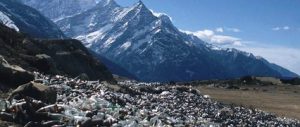Last year, Beijing boosted its decade-long campaign to develop the economically backward regions of western China by launching a fresh development drive. But on a research trip to Sichuan, Guangxi, Chongqing and other parts of China’s west, Outlook Weekly found that old problems continue to restrict progress. Poor transportation, out-dated industrial structure, environmental protection failures – these issues are still very real in western China.
As well as human history, geography has played its part in stifling economic development in this part of the country. Unlike China’s eastern fringes, the west lacks easy access to the sea. When trying to attract investment, the city of Chongqing finds that exporters prefer to build factories on the coast in order to avoid the extra costs associated with several thousand kilometres of overland transport, particularly when their business involves moving bulky, low-tech products.
The drive to develop the west has, as a result, included efforts to improve access to the sea. Guangxi, the only south-western province with a coastline, is currently working on the “Pan-Beibu Gulf Economic Cooperation”, a scheme to boost trade and logistics capacity in the South China Sea, as well as construction of the Xi River’s Golden Waterway, an engineering project to massively increase the handling capacity of the river port.
Sichuan, meanwhile, is set on becoming a transportation hub for the entire south-west, with work underway on rail routes in all directions out of the province. And Yunnan will strive over the next 10 years to become a bridgehead in China’s dealings with its south-western neighbours.
But these ambitions are hampered by stumbling blocks. Guangxi’s Beibu Gulf port has expanded rapidly, but the actual quantity of goods passing through is still low. In theory, Guangxi should be a better option than Guangdong or Shanghai for companies exporting from the south-west, but the longer route is still more popular. The majority of firms in Chongqing and Sichuan still choose to export their goods via Shanghai, taking advantage of low transportation costs on the Yangtze River.
Moreover, industry in China’s south-west still centres around oil, gas, coal, ferrous metals and hydropower – essentially energy and raw materials. Heavy industries have been expanding rapidly and, in recent years, the industrial structure has even started to show a reverse slide: the proportion of extractive and resource-intensive industries in overall output has been steadily increasing. Little processing – or actual use – of materials takes place here and it is increasingly clear that low-end industries are expanding. GDP figures for western China show that, in 2007, high-tech industry accounted for only 5.6% of the output of large-scale industry in that region. This was 3 percentage points down on 2000 and 7.8 percentage points lower than in eastern China.
Pu Yongjian, a professor at Chongqing University, explained: “If the west of China just relies on resource extraction and processing, while ignoring more environmentally friendly sectors such as tourism and culture, we will struggle to create a diversified development path.” The west is set to embark on a new round of resource extraction and, as this peaks, the worsening of the region’s industrial structure will accelerate, with the potential to wreak serious environmental damage.
So-called “new industries” also pose environmental dangers, however. Western regions are competing to attract the high-tech and capital-intensive enterprises relocating from the east coast, for example those producing electronic components, solar-power products and even chemicals. But the environmental risks are not being acknowledged. Even some ecologically sensitive areas are lowering environmental standards in order to open up space for new industries.
Take polysilicon, a material used in the manufacturing of solar cells, as an example. Sichuan is currently developing the “Chengdu–Leshan–Mianyang Polysilicon Industrial Zone”, to boost the region’s capacity to produce the material. Leshan can currently produce 7,500 tonnes of polysilicon a year and, by 2013, is expected to earn 100 million yuan (US$15 million) annually from the sale and use of 10,000 tonnes of polysilicon.
Local investment authorities take pride in attracting these “new industries”, but they frequently ignore the environmental risks that come with them. Polysilicon production is energy-intensive and polluting. Producing one megawatt of solar-cell capacity requires 2.2 million kilowatt hours of electricity and creates eight times the product’s weight in the by-product silicon tetrachloride – a toxic liquid. Due to high costs, Chinese firms have no, or inadequate, equipment to deal with this pollutant, meaning it can easily find its way into the environment.
In recent years, a lot of electronics manufacturing has also moved to the west of China. Currently, the IT sectors in Sichuan, Chongqing and Xi’an – the capital of Shaanxi province – each have an output of over 100 billion yuan (US$15 billion), with component manufacturing accounting for the bulk of this. Sichuan’s city of Suining has alone attracted almost 100 electrical component and circuit-board manufacturers over the past few years, leading to the creation of a 2.7-square kilometre electronics park. But the local government has shown little concern about the environmental practices of these firms.
The environmental dangers associated with the major chemical projects that these regions are competing to host are also being overlooked. In April last year, China National Petroleum Corporation started construction of an 800,000-tonne ethylene plant and a 10-million tonne oil refinery at Pengzhou on the banks of the Tuo River, a Yangtze tributary. The site is upwind and upstream of Chengdu, a major city just 39 kilometres away, and only five kilometres from urban Pengzhou.
And, in Chongqing’s Changshou district, German firm BASF is preparing build the world’s largest Methylene diphenyl diisocyanate(MDI) plant – a new, and controversial, neighbour for the ecologically sensitive Three Gorges Reservoir.
This article was originally published by Outlook Weekly, where Dong Zhenguo and Zhang Guilin are reporters.
Homepage image from Ling Shen


